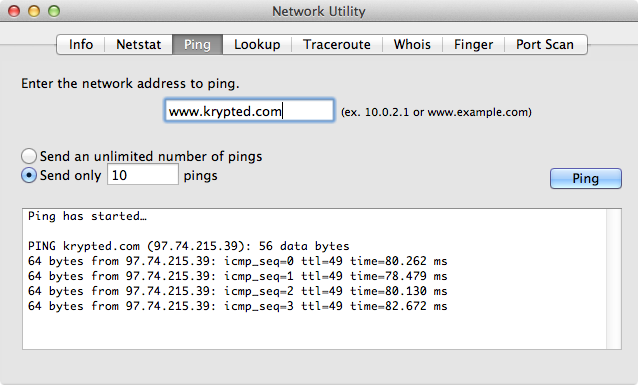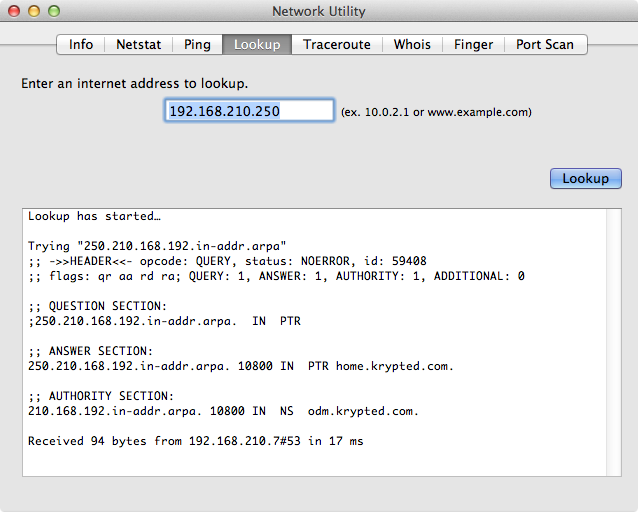Accessing resources by name rather than IP address is controlled by DNS, or Domain Name System. Lion Server can run a DNS server of its own, allowing it to cache and serve naming information for client computers (one of the client computers often being itself). When you provide a name server to OS X, you can use other DNS servers in your organization, DNS servers provided by your Internet service provider (i.e., your DSL or cable provider) or itself.
Before you install the Server app on a Lion computer, verify that the computerâs name matches what the DNS server has configured for the IP address the server will live on. In order to do so, use the Ping tab in Network Utility (located at /Applications/Utilities) to try to access the name of the host. When open, provide the name in the âEnter the network address to pingâ field and then click on the Ping button. The server will then attempt to resolve the hostname. If it can resolve the name, then the IP address that the server responded with will be listed in the output, similar to that in Figure 1-4.
Note
If the ping fails, do not be alarmed, as you may not have configured the server yet.
Servers should be accessible by name and IP address. In DNS, a PTR record is used to associate a default name that IP addresses respond to. If clients point to a DNS server you control, then you can configure both on your DNS server.
Testing that the name appropriately responds with the IP address is important. But equally as important for many environments is configuring the reverse IP address as well. To check that the IP address has the appropriate name configured, open Network Utility and then click on the Lookup tab. Enter the address of the server and then click on the Lookup button. Provided that the response contains the hostname of the server, then your servers are configured appropriately, as in Figure 1-5.
When installing OS X Server, the server will check that the DNS configuration matches the hostnames and IP address(es) on the server. If they do not, then the DNS service will be installed automatically and any issues will be remedied on the local DNS service. These DNS settings would then only be applicable for client computers with the DNS server running on the Lion Server applied. We will cover DNS further in Chapter 2.
Get Using Mac OS X Lion Server now with the O’Reilly learning platform.
O’Reilly members experience books, live events, courses curated by job role, and more from O’Reilly and nearly 200 top publishers.



